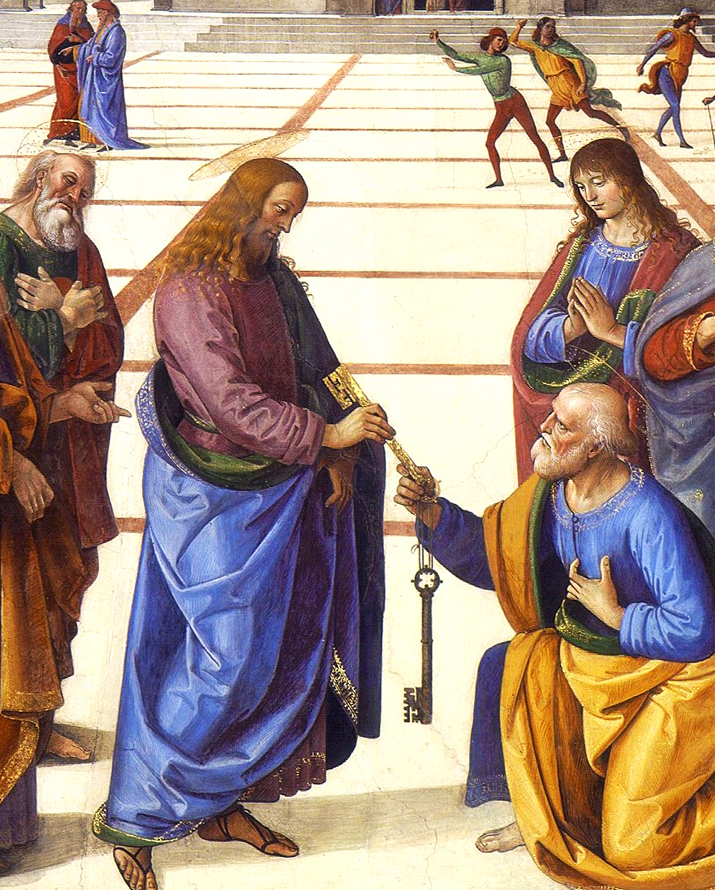

 The Church of Antioch was established by Peter in AD 32.
The Church of Antioch was established by Peter in AD 32.
When Peter left Antioch, to go to Rome (where he would establish the Church of Rome and later die), he appointed Evodius as Patriarch. Evodius was succeeded by Ignatius, who was the first to describe the church as “Catholic” meaning “Universal”.
During the Synod of Nicaea, the Bishop of Antioch became one of the Patriarchs of the Pentarchy (along with fellow Patriarchate of Alexandria). After the Council at Chalcedon, Christianity split into the Catholics and the Oriental Orthodox, thus splitting the Church of Antioch. The Patriarch of Antioch and Pope of Alexandria led the Oriental Orthodox, and the Patriarch of Constantinople and the Pope of Rome led the Catholic Church.
Severus, the Patriarch of Antioch, was exiled to Egypt by the Emperor of the Byzantine Empire for following the Oriental Orthodox Church. The Catholic group of the Church of Antioch (later Greek Orthodox Church of Antioch), accepted the new Patriarch, appointed by the Pope of Rome, as their new Patriarch, after the exile of Severus. The Syriac Orthodox Church, or the Oriental Orthodox group of the Church of Antioch, continued to accept Severus as Patriarch until his death in AD 538. In AD 518 the Patriarchate was forced to flee from Antioch and it continues move from place to place until it moved to Dayro d-Mor Hanayo (Kurkmo Dayro, or Deir az-Za'faran), in Mardin, Turkey in 1106.
By AD 544, the Syriac Orthodox Church had only three bishops remaining. During this time, a priest named Jacob traveled to Constantinople to ask Empress Theodora's (who was a Miaphisite herself), the daughter of a Syriac Orthodox priest, consent to be ordained as a bishop. He was ordained as Mor Jacob Baradeus (Mor Ya'qub Burdono ܝܥܩܘܒ ܒܘܪܕܥܝܐ), by Pope Theodosius I, Pope of Alexandria and he traveled to many places to revive the Syriac Orthodox Church. He managed to consecrate 27 bishops, and hundreds of priests and deacons for the church. He led the consecration of Mor Segius of Tella as the Patriarch of Antioch (first Patriarch of the independent Syriac Orthodox Church) in 544. It is after this bishohp that the Syriac Orthodox Church in India gets the name "Jacobite" (Jacobite Syrian Christian Church). He revived the Miaphisite belief in the Church of Antioch throughout persecution. The Syriac Orthodox Church continued to be persecuted under the Arabs, Mongols, Crusaders, Mamluks, and Ottomans.
During 1915 (known as the Sayfo/ܣܝܦ or “the year of the sword” in Syriac), more than 250,000 Syriac Orthodox Christians in the Middle East were wiped out by the Ottoman Empire. Many Syriac Orthodox Villages were emptied, and historical monasteries and churches were destroyed.
During World War I, the Patriarchate was again forced to flee by the Ottoman Empire and the patriarchate was forced to flee to Homs, Syria in 1953, and later, Damascus, in 1957.
The Syriac Orthodox Church continues to grow to this day under the Patriarchate. The Syriac Orthodox Church, along with the other Oriental Orthodox Churches, is now in sacramental cooperation with the Catholic Church, and is working on a communion with the Eastern Orthodox Church and the Catholic Church.
Patriarch Ignatius Aphrem II, 123rd and Current Patriarch of Antioch and All the East
The Patriarch is considered the legitimate successor of Peter the Apostle, on the Holy Throne of Antioch.
The patriarch, as first among the bishops, convenes the Holy Synod of the Syriac Orthodox Church and presides over the meeting.
The patriarch, has the authority to consecrate the Maphrian (also known as the Catholicos of India) and bishops who are elected by the Holy Synod, but he has to be assisted by two other bishops (by his invitation). He is the only one authorized to conduct the consecration of a bishop. The Maphrian and other bishops can do it with the consent of the Patriarch. He is also the only one that can consecrate the Holy Chrism (Mooron).
The patriarch signs all documents with other denominations and he alone is in charge of external relations with other churches. The patriarch dispatches clergy on ecclesiastical and cultural works.
When the Patriarch visits a diocese, he sits on the Cathedral seat of the church. The bishops are not allowed to carry their pastoral staff and wear their red vestment in front of the patriarch (bishops usually wear a red vestment while travelling in their diocese) in respect to the Apostolic See.
The Patriarch has the right to change, introduce, or abolish church rites. All Syriac Orthodox monasteries are in the hands of the Patriarch and he alone has the authority to appoint its care takers.
